Feb 05, 2022, Updated Apr 20, 2022 As someone who grew up eating dal everyday of her life, it still is (and will always be) an integral part of my diet and life. I cannot do without eating dal at least 2 times a week. That’s bare minimum! Sure, I do not cook it everyday like it was in my house but it’s my comfort food and I need it every week. There’s so much variety when it comes to dal (like green moong, whole masoor dal to name a few). There are so many different types of lentils and each lentil can be prepared in several ways. I didn’t grew up eating Gujarati Dal (for those who aren’t aware, Gujarat is a state in western part of India) but it has become one of my favorites in the past few years. I grew up eating the same lentil – toor dal/arhar dal everyday but it was cooked in a very different way in my house. There were no spices added and it only had a simple tempering of cumin seeds and sometimes garlic. It was really that basic. When I first tried Gujarati Dal (and this was many years ago on a trip to Gujarat), I instantly liked it. It was spicy, tangy and sweet and paired so well with all the sabzis (vegetables) and rice. I would call it khatti meethi dal which literally translated to sour and sweet dal. Now, I make Gujarati Dal often in my kitchen and it gets over in no time. Sarvesh is always happy when I make this dal so that’s an added bonus!
Consistency of Gujarati Dal
The consistency of Indian dal often confuses people, especially my readers who are from US and those who didn’t grew up eating it. The confusion comes from the fact that most dal on the menu in Indian restaurants in the US are thick. But there’s no one consistency when it comes to dal in India. Every state, every region of India will make it differently and India is such a large country so the cuisines and method of making dals also vary widely. This Gujarati Dal (which is made in the state of Gujarat and hence the name) has quite a thin consistency. It’s like milk consistency so don’t worry if this looks too thin to you. It is supposed to be thin. It does thicken as it cools down. My everyday dal that mom made was also similar consistency so I am very used to this consistency dal. But I thought I would put a note here in case this confuses some of you.
Ingredients for Dal
The ingredient list for this dal can be divided into 2 parts: the dal itself and the tadka (tempering). For the Dal Toor Dal/Arhar Dal: this dal is made with toor dal which is also known as arhar dal or pigeon peas lentil. You can find it at any Indian grocery store. If you don’t have toor dal, you can definitely use moong or masoor as well. Flavoring: this Gujarati Dal is flavored with ginger, tomatoes and green chilies. If you are not a fan of tomatoes, you can simply skip it. Spices: the dal gets its spicy flavor from garam masala, red chili powder, the tanginess from lime juice and the sweetness from jaggery. Tamarind can also be added for the tang in place of lemon juice. Peanuts: boiled peanuts are added to this dal which gives it a nice texture. I usually boil the peanuts along with the dal in the pressure cooker. You can definitely skip the peanuts if you are not a fan or want to make this nut-free. For the Tadka The tadka is made with bunch of whole spices like cinnamon, cloves, cumin seeds, mustard seeds, fenugreek seeds and curry leaves!
Step by Step Instructions
1- To a pressure cooker, add 1 cup toor dal/arhar dal along with 1 teaspoon salt, 3/4 teaspoon turmeric powder and 3 cups of water. Add 1.5 tablespoon peanuts to a small steel bowl and place it in the center of pressure cooker. You can also tie the peanuts in a muslin cloth. 2- Cook for 7 to 8 whistles on medium-high heat. Let the pressure release naturally. If using an Instant pot, pressure cook 8 minutes on high pressure with natural pressure release. 3- Open the pressure cooker, carefully remove the bowl of peanuts using a pair of tongs and set aside. 4- Add 2 to 3 cups more water (adjust according to consistency preference, Gujarati dal is supposed to be on the thinner side, so I recommend adding 3 cups water here). 5- Using an immersion blender, blend the dal until it’s uniform and you see no dal particles. 6- At this point, I transferred the dal from the pressure cooker to a pot on medium heat but you don’t have to do it. You can do rest of the steps in the pressure cooker as well. Add 1/3 cup chopped tomato, 1 teaspoon grated ginger and 1 sliced green chili to the dal. 7- Now, add the following:
2 & 1/2 tablespoons jaggery powder (or use 1 small piece of jaggery) 3/4 teaspoon coriander powder 1/4 teaspoon garam masala 1/4 teaspoon red chili powder (add more to taste) 1/2 teaspoon Kashmiri red chili powder remaining 1/2 teaspoon of salt (adjust to taste)
8- Give everything a good stir and let it simmer for 10 minutes. Meanwhile make the tadka. 9- To make the tadka, heat 2 tablespoons ghee (or use oil) in a small pan on medium heat. Once hot, add the following:
1/2 teaspoon cumin seeds 1/2 teaspoon mustard seeds 1/2 teaspoon fenugreek seeds 1/4 teaspoon hing 4 cloves & 1-inch cinnamon stick
Let the seeds sizzle and mustard seeds pop. 10- Add in the curry leaves. They will splutter a lot so move away from the pan as soon as you add the curry leaves. 11- Pour the tadka over the pot of simmering dal. 12- Add the lemon juice and also the boiled peanuts back into the dal. Garnish with cilantro and simmer 2 more minutes! Serve piping hot.
Serving Suggestions
The dal is best enjoyed with plain white rice. Some other options are to serve this dal with:
jeera rice quinoa
You can also serve it as a part of thali along with sabziz, Gujarati kadhi etc.
Cooking Dal on Stove-top
If you don’t have a stove-top pressure cooker or Instant pot, you can soak the lentils for 2 to 4 hours. Then drain and rinse them and transfer to a pot with around 3 cups water. Cook on medium heat until the lentils are completely cooked. This will take around 30 minutes.
Instant Pot Version
Add the dal along with salt and turmeric and the peanuts to the steel pot of your Instant Pot. Close the lid and cook on high pressure for 8 minutes. Let the pressure release naturally. Then press the sauté button and do the rest of the steps on sauté mode. Make tadka in a separate pan and pour over simmering dal.
Vegan Version
This dal is vegan as such except the use of ghee in the tadka (tempering). To make this gujarati dal vegan, just replace the ghee with oil. Rest of the steps and ingredients will remain same.
Tips & Notes
Leftover dal can be stored in the refrigerator for up to 2 days. The consistency of dal will thicken so you will need to add water while re-heating. You can re-heat in microwave or in a pan on stove-top. If you want to store dal for even longer time, you can freeze it in a freezer safe bag. Skin hing (asafoetida) to make this recipe gluten-free. This is a thin consistency dal, so keep that in mind while making the recipe.
If you’ve tried this Recipe then don’t forget to rate the recipe! You can also follow me on Facebook, Instagram to see what’s latest in my kitchen and on YouTube to watch my latest videos.
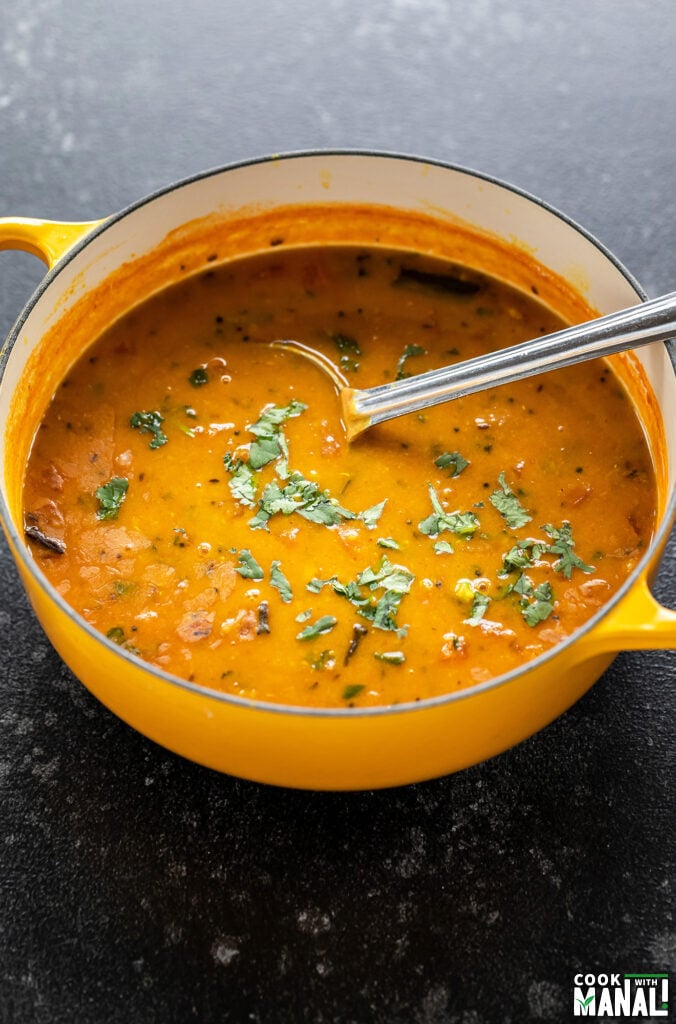
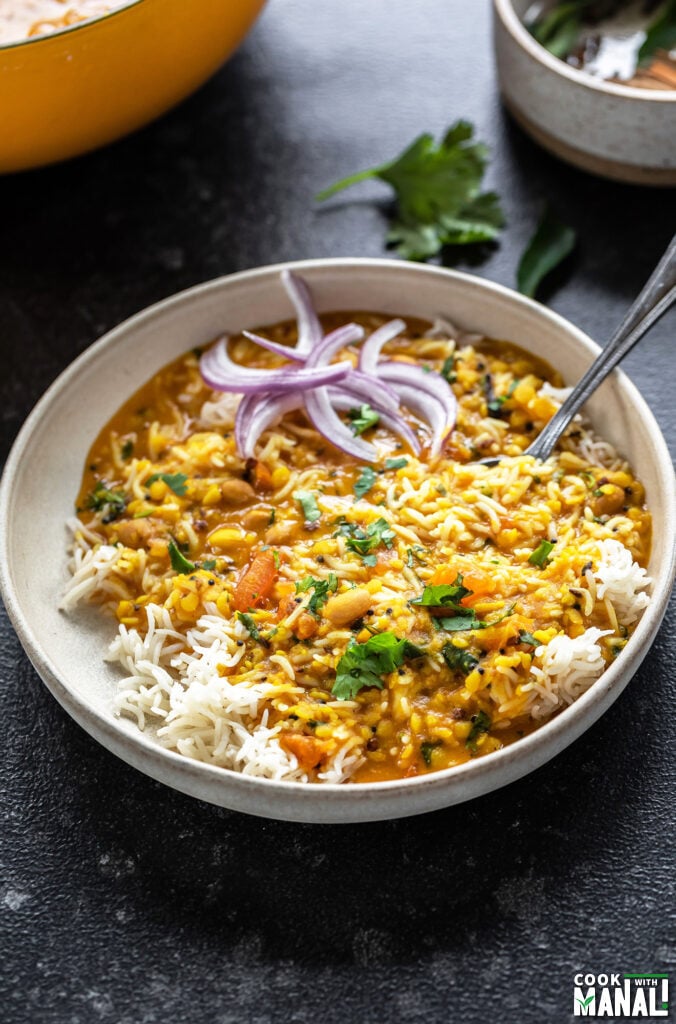
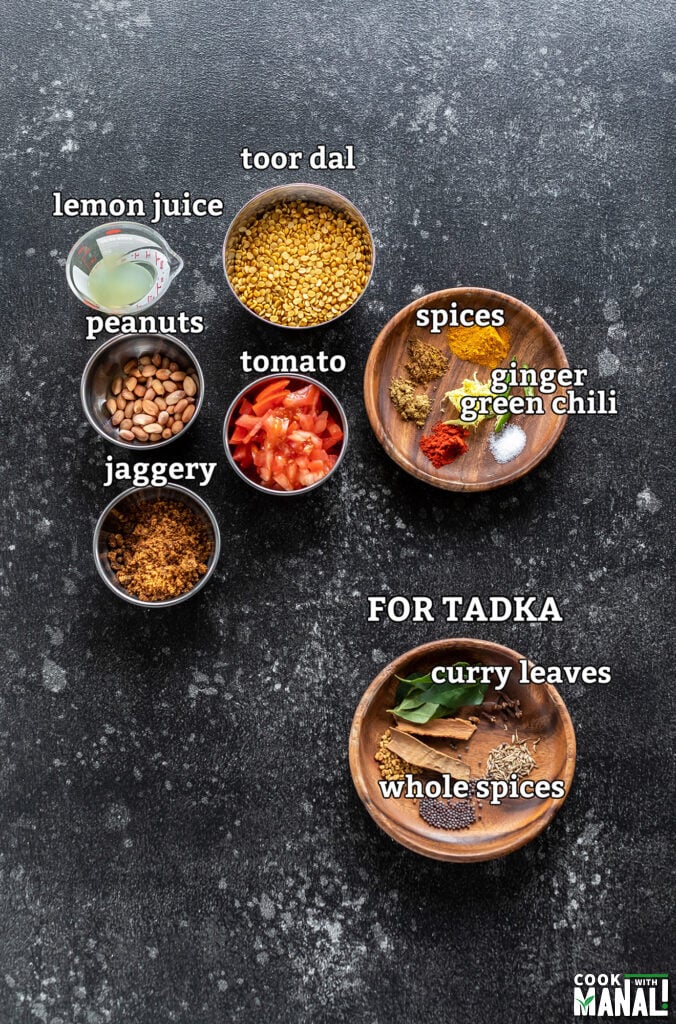
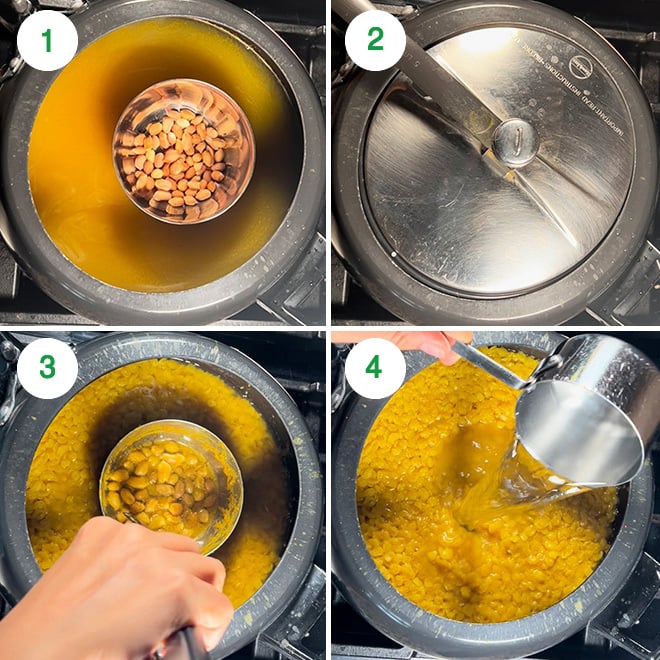
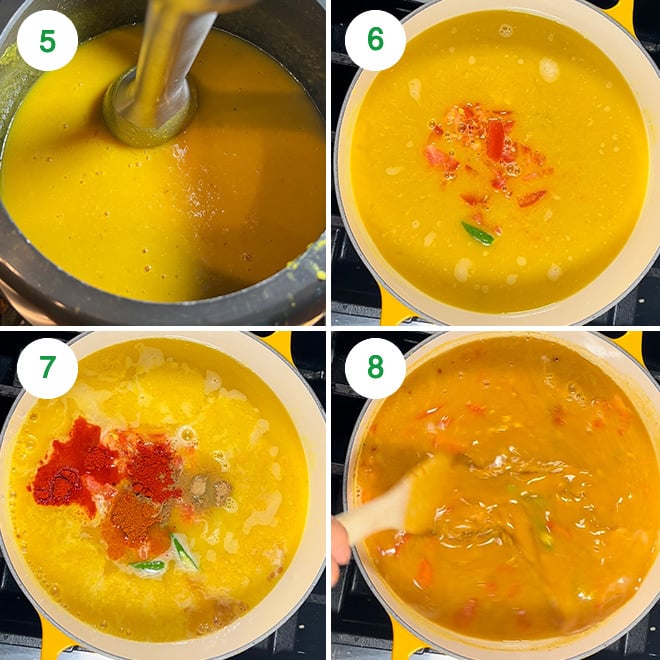
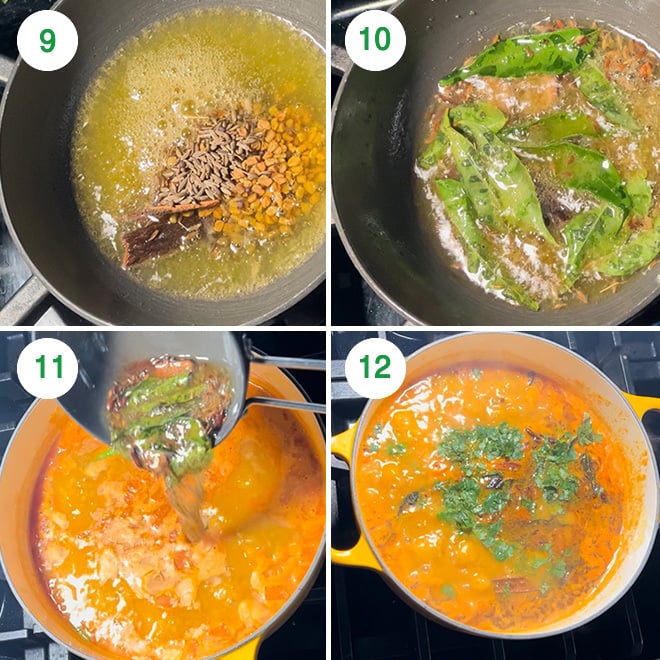
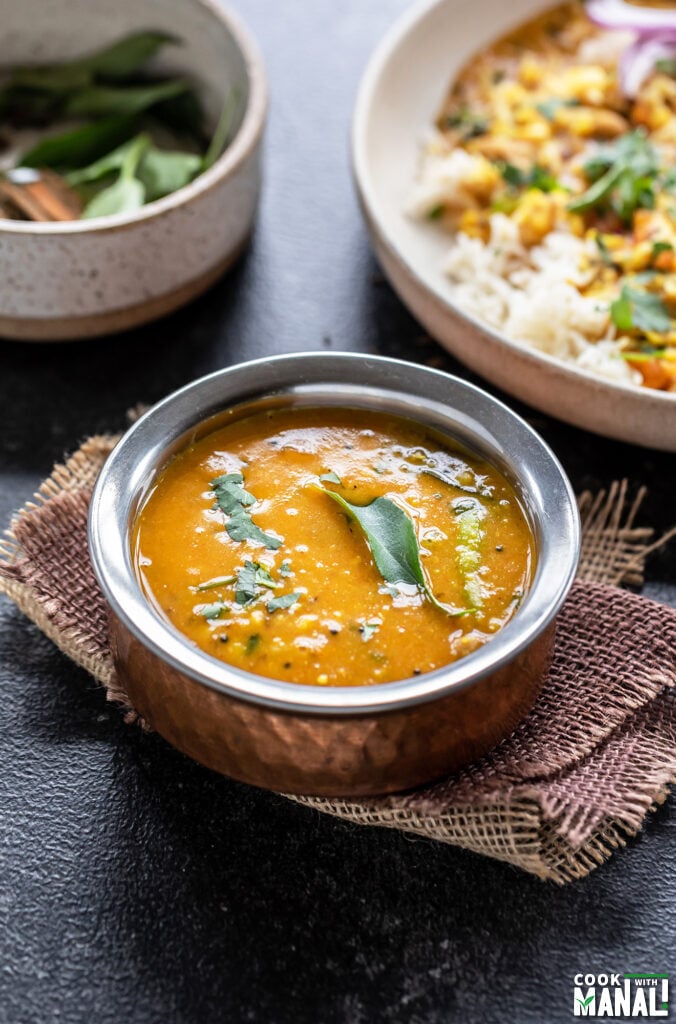
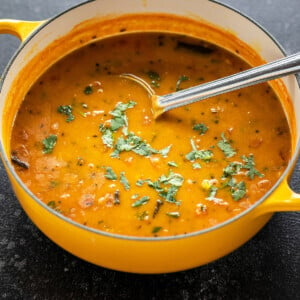
title: “Gujarati Dal Recipe " ShowToc: true date: “2024-09-12” author: “Erica Franco”
Feb 05, 2022, Updated Apr 20, 2022 As someone who grew up eating dal everyday of her life, it still is (and will always be) an integral part of my diet and life. I cannot do without eating dal at least 2 times a week. That’s bare minimum! Sure, I do not cook it everyday like it was in my house but it’s my comfort food and I need it every week. There’s so much variety when it comes to dal (like green moong, whole masoor dal to name a few). There are so many different types of lentils and each lentil can be prepared in several ways. I didn’t grew up eating Gujarati Dal (for those who aren’t aware, Gujarat is a state in western part of India) but it has become one of my favorites in the past few years. I grew up eating the same lentil – toor dal/arhar dal everyday but it was cooked in a very different way in my house. There were no spices added and it only had a simple tempering of cumin seeds and sometimes garlic. It was really that basic. When I first tried Gujarati Dal (and this was many years ago on a trip to Gujarat), I instantly liked it. It was spicy, tangy and sweet and paired so well with all the sabzis (vegetables) and rice. I would call it khatti meethi dal which literally translated to sour and sweet dal. Now, I make Gujarati Dal often in my kitchen and it gets over in no time. Sarvesh is always happy when I make this dal so that’s an added bonus!
Consistency of Gujarati Dal
The consistency of Indian dal often confuses people, especially my readers who are from US and those who didn’t grew up eating it. The confusion comes from the fact that most dal on the menu in Indian restaurants in the US are thick. But there’s no one consistency when it comes to dal in India. Every state, every region of India will make it differently and India is such a large country so the cuisines and method of making dals also vary widely. This Gujarati Dal (which is made in the state of Gujarat and hence the name) has quite a thin consistency. It’s like milk consistency so don’t worry if this looks too thin to you. It is supposed to be thin. It does thicken as it cools down. My everyday dal that mom made was also similar consistency so I am very used to this consistency dal. But I thought I would put a note here in case this confuses some of you.
Ingredients for Dal
The ingredient list for this dal can be divided into 2 parts: the dal itself and the tadka (tempering). For the Dal Toor Dal/Arhar Dal: this dal is made with toor dal which is also known as arhar dal or pigeon peas lentil. You can find it at any Indian grocery store. If you don’t have toor dal, you can definitely use moong or masoor as well. Flavoring: this Gujarati Dal is flavored with ginger, tomatoes and green chilies. If you are not a fan of tomatoes, you can simply skip it. Spices: the dal gets its spicy flavor from garam masala, red chili powder, the tanginess from lime juice and the sweetness from jaggery. Tamarind can also be added for the tang in place of lemon juice. Peanuts: boiled peanuts are added to this dal which gives it a nice texture. I usually boil the peanuts along with the dal in the pressure cooker. You can definitely skip the peanuts if you are not a fan or want to make this nut-free. For the Tadka The tadka is made with bunch of whole spices like cinnamon, cloves, cumin seeds, mustard seeds, fenugreek seeds and curry leaves!
Step by Step Instructions
1- To a pressure cooker, add 1 cup toor dal/arhar dal along with 1 teaspoon salt, 3/4 teaspoon turmeric powder and 3 cups of water. Add 1.5 tablespoon peanuts to a small steel bowl and place it in the center of pressure cooker. You can also tie the peanuts in a muslin cloth. 2- Cook for 7 to 8 whistles on medium-high heat. Let the pressure release naturally. If using an Instant pot, pressure cook 8 minutes on high pressure with natural pressure release. 3- Open the pressure cooker, carefully remove the bowl of peanuts using a pair of tongs and set aside. 4- Add 2 to 3 cups more water (adjust according to consistency preference, Gujarati dal is supposed to be on the thinner side, so I recommend adding 3 cups water here). 5- Using an immersion blender, blend the dal until it’s uniform and you see no dal particles. 6- At this point, I transferred the dal from the pressure cooker to a pot on medium heat but you don’t have to do it. You can do rest of the steps in the pressure cooker as well. Add 1/3 cup chopped tomato, 1 teaspoon grated ginger and 1 sliced green chili to the dal. 7- Now, add the following:
2 & 1/2 tablespoons jaggery powder (or use 1 small piece of jaggery) 3/4 teaspoon coriander powder 1/4 teaspoon garam masala 1/4 teaspoon red chili powder (add more to taste) 1/2 teaspoon Kashmiri red chili powder remaining 1/2 teaspoon of salt (adjust to taste)
8- Give everything a good stir and let it simmer for 10 minutes. Meanwhile make the tadka. 9- To make the tadka, heat 2 tablespoons ghee (or use oil) in a small pan on medium heat. Once hot, add the following:
1/2 teaspoon cumin seeds 1/2 teaspoon mustard seeds 1/2 teaspoon fenugreek seeds 1/4 teaspoon hing 4 cloves & 1-inch cinnamon stick
Let the seeds sizzle and mustard seeds pop. 10- Add in the curry leaves. They will splutter a lot so move away from the pan as soon as you add the curry leaves. 11- Pour the tadka over the pot of simmering dal. 12- Add the lemon juice and also the boiled peanuts back into the dal. Garnish with cilantro and simmer 2 more minutes! Serve piping hot.
Serving Suggestions
The dal is best enjoyed with plain white rice. Some other options are to serve this dal with:
jeera rice quinoa
You can also serve it as a part of thali along with sabziz, Gujarati kadhi etc.
Cooking Dal on Stove-top
If you don’t have a stove-top pressure cooker or Instant pot, you can soak the lentils for 2 to 4 hours. Then drain and rinse them and transfer to a pot with around 3 cups water. Cook on medium heat until the lentils are completely cooked. This will take around 30 minutes.
Instant Pot Version
Add the dal along with salt and turmeric and the peanuts to the steel pot of your Instant Pot. Close the lid and cook on high pressure for 8 minutes. Let the pressure release naturally. Then press the sauté button and do the rest of the steps on sauté mode. Make tadka in a separate pan and pour over simmering dal.
Vegan Version
This dal is vegan as such except the use of ghee in the tadka (tempering). To make this gujarati dal vegan, just replace the ghee with oil. Rest of the steps and ingredients will remain same.
Tips & Notes
Leftover dal can be stored in the refrigerator for up to 2 days. The consistency of dal will thicken so you will need to add water while re-heating. You can re-heat in microwave or in a pan on stove-top. If you want to store dal for even longer time, you can freeze it in a freezer safe bag. Skin hing (asafoetida) to make this recipe gluten-free. This is a thin consistency dal, so keep that in mind while making the recipe.
If you’ve tried this Recipe then don’t forget to rate the recipe! You can also follow me on Facebook, Instagram to see what’s latest in my kitchen and on YouTube to watch my latest videos.







